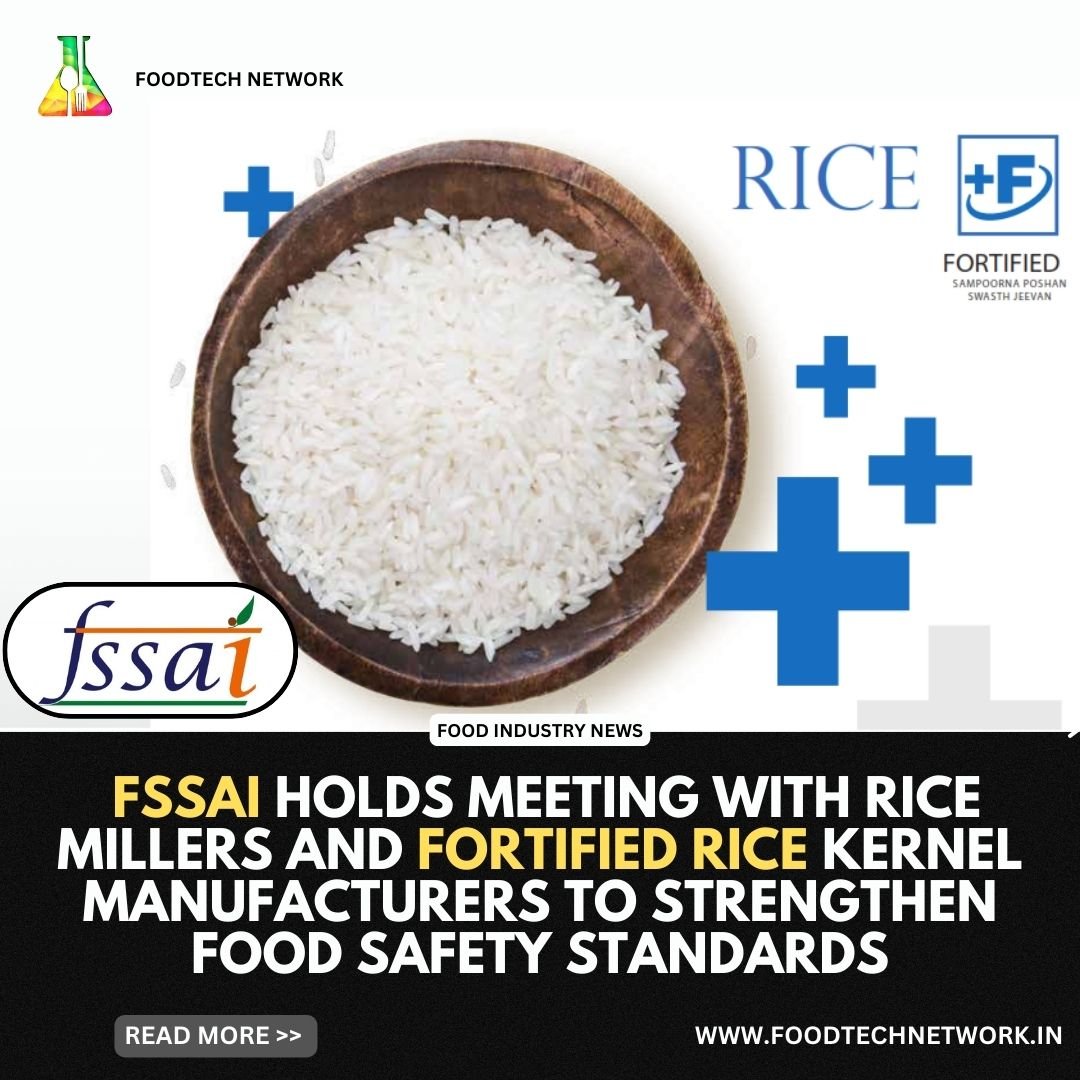📌 Introduction
The Food Safety and Standards Authority of India (FSSAI) has recently announced the appointment of 24 Fortified Rice Safety Officers (FRSOs), a significant milestone in ensuring safe and nutritious food for millions. This strategic move underscores the government’s commitment to tackling micronutrient deficiencies—India’s “hidden hunger”—by regulating fortified rice, a staple in welfare schemes. In this post, we'll explore why this matters, what it means for consumers, and how it impacts businesses and society.
🧩 1. Why Fortified Rice Matters
-
Micronutrient deficiency remains a national concern: Despite rice’s caloric value, it lacks essential vitamins and minerals lost during milling. Fortification—adding Iron, Vitamin B12, and Folic Acid—addresses these gaps effectively.
-
Boosting public health: Studies show fortified rice significantly reduces anemia and supports maternal and child health. With the government aiming for universal fortified rice rollout under welfare schemes by 2024, safety oversight is crucial.
📋 2. Who Are Fortified Rice Safety Officers?
FSSAI’s FRSOs are designated food safety officers equipped with specialized training to monitor:
-
Manufacturing processes – compliance with fortification standards
-
Fortification sampling and testing, ensuring accurate fortificant levels
-
Quality checks – verifying the authenticity and shelf-life of fortified rice and rice kernels (FRK)
-
Supply chain audits – from supplier to policymaker
This enhances regulatory capacity and ensures fortified rice is safe, nutritious, and trusted.
🛠 3. What the Appointment Means
| Impact Area | Description |
|---|---|
| Enhanced Compliance | FRSOs enforce Food Safety and Standards (Fortification of Foods) Regulations, 2018—ensuring iron, vitamin B12, and folic acid levels. |
| Better Sampling & Testing | Officers work with FSSAI-notified labs; updated list issued on 6 June 2025. |
| Shelf-life Assurance | FSSAI has advised standard expiry labeling protocols; shelf-life studies ongoing. |
| Supply Chain Integrity | Routine inspections, audits, and batch-level traceability. |
| Consumer Trust | Greater confidence in fortified rice (look for the “+F” logo). |
🌟 4. Real-World Example
In Bihar, several states are piloting fortified rice initiatives. With FRSOs on board, these programs saw:
-
A 15% increase in compliance in mill-level fortification
-
Reduction in micronutrient variability between batches
This replicable structure aims for national rollout across Public Distribution System (PDS), ICDS, and Mid-Day Meal schemes by 2024.
✅ 5. Benefits for Stakeholders
For Consumers
-
Guaranteed nutritional value and safety
-
Clear labeling with “+F” logo
-
Improved maternal and child health outcomes
For Food Businesses
-
Clearer, more consistent regulatory guidelines
-
Easier traceability and compliance
-
Boost in consumer trust and brand value
For the Government
-
Data-backed performance monitoring
-
Effective regulation via trained officers
-
Alignment with national health targets
🧭 6. Practical Tips for Businesses
-
Register fortified products: Apply under FSSAI’s resource centres.
-
Train staff: Ensure sampling and testing protocols are followed.
-
Label appropriately: Include batch codes, “+F” logo, expiration details.
-
Maintain documentation: For audits and inspections.
-
Engage with FRSOs: Facilitate inspections and follow corrective actions.
💡 7. The Road Ahead
FSSAI is advancing several key initiatives:
-
Releasing fortificant testing lab updates regularly (last in June 2025)
-
Strengthening regulatory standards, including sampling procedures for fortified rice
-
Studying shelf-life degradation with projected outcomes by 2025–26
Ultimately, FRSO deployment signals a robust shift in food safety governance, supporting national health goals and feeding millions.
🔚 Conclusion
The induction of 24 Fortified Rice Safety Officers by FSSAI is a welcome and necessary stride toward enhancing food safety and combatting malnutrition in India. This initiative improves compliance, trust, and system-level oversight. Whether you're a consumer, producer, or policymaker—fortified rice now comes with stronger safety guarantees.
🧩 FAQs
Q1: What does “+F” on rice packaging mean?
A1: It signifies that rice is fortified with micronutrients like iron, vitamin B12, and folic acid, conforming to FSSAI norms. nuffoodsspectrum.in
Q2: How can consumers verify fortified rice?
A2: Look for the official “+F” logo, FSSAI license number, batch code, and expiry date.
Q3: Who conducts the lab testing?
A3: FSSAI-notified labs test fortification levels; the latest list was published on 6 June 2025.
Q4: How many officers are appointed and where?
A4: A total of 24 Officers are deployed nationally, with regional postings overseeing compliance.
Q5: What should rice millers do?
A5: Ensure authorized fortification setups, maintain logs, adhere to sampling/testing protocols, and cooperate with FRSOs.
🏷️ Keywords
FSSAI Fortified Rice Safety Officers, fortified rice regulation, food safety India, micronutrient fortification, rice kernel safety, fortified rice compliance, “+F” logo, FSSAI fortification labs


